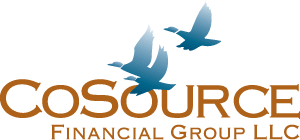SECURE Act 2.0 Mandatory Provisions
In late December 2022, Congress passed the Consolidated Appropriations Bill (2023) that included provisions of a retirement bill now known as SECURE Act 2.0. The focus of the bill is retirement-based accounts such as IRAs, Roth IRAs and employer sponsored retirement plans including 401(k)s, 403(b)s, SEP and SIMPLE IRAs. Compared to the first SECURE Act passed in December 2019, which had roughly a dozen provisions around these accounts, SECURE Act 2.0 has dozens of new provisions[1].
In this three-part series, we’ll break down which provisions are mandatory and of the optional provisions, which ones we recommend to our clients.
The following are major mandatory provisions:
Required Minimum Distributions (RMD Age Increases)
Effective date: Calendar years after December 31, 2022
The required age for an RMD beginning date is increased for participants and spousal beneficiaries of a participant who died prior to reaching the RMD beginning date.
New RMD ages are:
- 73 for an individual who attains age 72 after December 31, 2022 and age 73 before January 1, 2033; and
- 75 for an individual who attains age 74 after December 31, 2032.
RMD Excise Tax Reduction
Effective for taxable years beginning after December 29, 2022
The lnternal Revenue Code currently imposes a 50% excise tax on RMDs that are not taken in a timely manner. SECURE 2.0 reduces the excise tax from 50% to 25% (and to 10% if the correction is made in a timely manner).
Broadened Internal Revenue Service (IRS) 10% Premature Distribution Tax Penalty Exemption for Public Safety Employees and New Exemption for Private Sector Firefighters
Effective for distributions made after December 29, 2022
“Qualified public safety employees” in governmental plans who are age 50 or older have an exemption from the IRS 10% premature distribution penalty tax. This provision adds the exemption for private sector firefighters and broadens exemption for governmental employers to earlier of age 50 or 25 years of service under the plan.
Roth Catch-up
Effective date: Tax years after December 31, 2023
lf a participant’s prior year FICA wages from the employer sponsoring the plan exceeded $145,000, then a participant’s age 50+ catch-up deferrals can only be made as a Roth contribution. The $145,000 threshold is subject to IRS annual cost of living adjustments in $5,000 increments.
Clarification of Substantially Equal Periodic Payment Rule
Effective date: Transfers, rollovers, exchanges, and distributions (as applicable) occurring on or after December 31, 2023, and effective for annuity distributions beginning after December 29, 2022
A substantially equal periodic payment is not subject to an IRS 10% premature distribution penalty tax. SECURE 2.0 clarifies that the exception still applies if the amount is rolled over or exchanged for an annuity that satisfies RMD requirements.
Roth Plan Distribution Rules
Effective date: Tax years after December 31, 2023
Under current law, RMDs to a plan participant must consider all amounts (both non-Roth and Roth) from that participant’s account from an employer-sponsored retirement plan. SECURE 2.0 eliminates this requirement so that the designated Roth account under a plan is not subject to RMD during the participant’s lifetime.
Surviving Spouse Election to be Treated as Employee (for RMDs)
Effective date: Calendar years after December 31, 2023
lf a participant dies before his or her required beginning date and designated their spouse as the sole beneficiary, then the spouse may elect to defer RMD until the year in which that spouse attains that year’s RMD age and the spouse’s RMD will be calculated under the life expectancy table typically available only for a plan participant.
Safe Harbor for Corrections of Employee Elective Deferral Failures
Effective date: Errors after December 31, 2023
Currently, there is safe harbor guidance for correction of elective deferral issues, but it is slated to expire in 2023. SECURE 2.0 addresses the issue by providing a statutory safe harbor for the connection of a reasonable administrative error involving automatic contribution or automatic escalation.
Automatic Enrollment and Increase for New Plans
Effective date: Plan years after December 31, 2024
Eligible Automatic Contribution Arrangement is required for 401(k)and certain 403(b) plans established after December 29, 2022. Such plans must automatically enroll eligible participants using an initial 3% minimum and 10% maximum contribution rate.
Each year thereafter, that percentage must automatically increase by 1% up to at least 10% (but capped at 15% of compensation). A plan with an eligible automatic contribution arrangement operating under a nondiscrimination safe harbor has a 10% cap on permissible automatic escalation for plan years ending before January 1, 2025.
The plan must permit a participant to make withdrawals no later than 90 days after the date of the first contribution. Eligible participants may opt out of the automatic contribution or elect another percentage to be deferred into the plan.
Coverage for Long-term Part-time Workers
Effective date: Plan years after December 31, 2024
Further reduces the minimum eligibility service requirements from three years (set forth in SECURE Act 1.0) to two years.
- lndividuals will now be eligible as of the earlier of (1) one year of service, or (2) the completion of a 24-month period consisting of two consecutive 12-month periods with 500 hours of service and attainment of age 21 by the end of the calendar year.
- This reduction does not apply to employees subject to collective bargaining or nonresident aliens and the 12-month period beginning before January 1, 2023 is not taken into account.
Saver’s Match
Effective for taxable years after December 31, 2026
Current law provides for a nonrefundable credit for certain individuals who make contributions to individual retirement accounts (IRAs), employer retirement plans (such as 401(k) plans), and ABLE accounts.
This rule change repeals and replaces the credit with respect to IRA and retirement plan contributions, changing it from a credit paid in cash as part of a tax refund into a federal matching contribution that must be deposited into a taxpayer’s IRA or certain eligible retirement plan. The match is 50% of IRA or retirement plan contributions up to $2,000 per individual. The match phases out between $41,000 and $71,000 in the case of taxpayers filing a joint federal individual income tax return ($20,500 to $35,500 for single taxpayers and married filing separate; $30,750 to $53,250 for head of household filers).
NOTE: Saver’s Match cannot be withdrawn without incurring penalties, including repayment to the U.S. Treasury Department in some cases where the Saver’s Match is withdrawn from an individual retirement account before retirement.
Paper Benefit Statements
Effective date: Plan years after December 31, 2025
Amends ERISA to require that a defined contribution plan provide at least one paper benefit statement to participants annually and one paper benefit statement every three years to participants in a defined benefit plan, unless a participant in either plan type elects otherwise.
Plan Amendments
Plan amendments to satisfy SECURE 2.0 must be adopted no later than the end of the 2025 plan year for nongovernmental plans, and the end of the 2O27 plan year for governmental plans and collectively bargained plans, unless the Secretary of the Treasury provides for a later date.
SECURE 2.0 also extends the plan amendment deadline for Setting Every Community Up for Retirement Enhancement Act of 2019 (SECURE), the Coronavirus Aid, Relief, and Economic Security (CARES) Act, and the Taxpayer Certainty and Disaster Tax Relief Act of 2020 to align with the plan amendment deadlines noted above.
[1] *Voya “SECURE 2.0: Key Provisions,” Revised January 27, 2023





